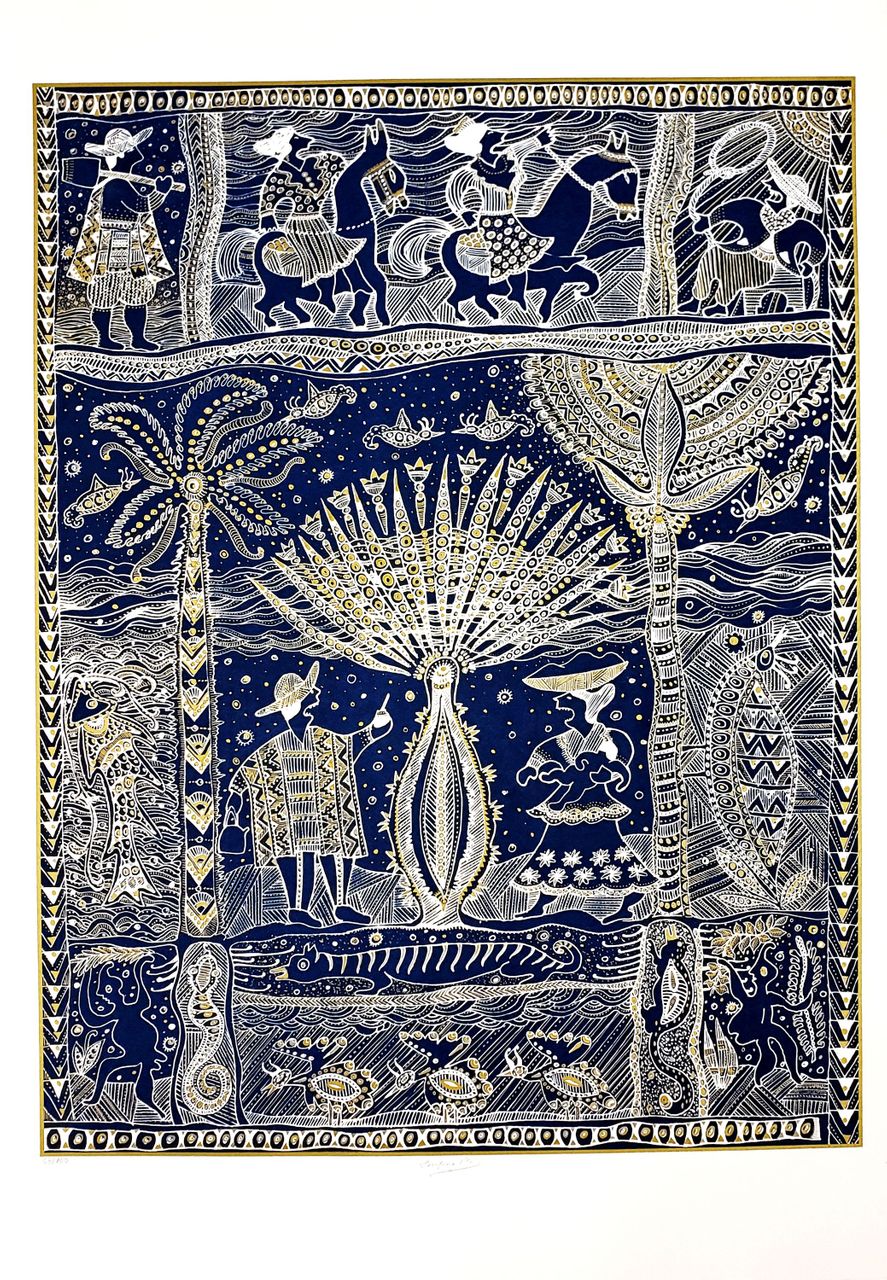-:-- / -:--
-:--
Josefina Plá, 1903-1999
Motivos Payaguá (Payaguá motifs), 1992
Silkscreen on paper
98.0 x 66.0 cm (38.6 x 26.0 in)
more
Printmaker, painter, potter, dramaturg, historian, poet, novelist, pedagogue, Josefina Plá (1903-1999) was a woman of many talents. Co-founder of the Arte Nuevo group, she proceeded to historicise it, offering texts and perspective on the newest artmaking in Paraguay, which she made sure was not a reiteration of European tendencies. Throughout her work, she sought to give visibility to the work of women and to be an advocate for their active role in shaping Paraguayan culture. In her writing about Arte Nuevo, which she characterized as being propelled by the virus of dissidence, Plá underlines the fundamental role of the women artists comprising the majority of the group. Though she was a native of the Canary Islands, and was weary of her foreigner’s gaze onto Paraguayan culture, her enthusiasm for learning about its harsh colonial history and indigenous heritage brought her to learn Guaraní and to adopt a literary style as well as an aesthetic that could express the innermost secrets and nuances of the country.
... read more
Printmaker, painter, potter, dramaturg, historian, poet, novelist, pedagogue, Josefina Plá (1903-1999) was a woman of many talents. Co-founder of the Arte Nuevo group, she proceeded to historicise it, offering texts and perspective on the newest artmaking in Paraguay, which she made sure was not a reiteration of European tendencies. Throughout her work, she sought to give visibility to the work of women and to be an advocate for their active role in shaping Paraguayan culture. In her writing about Arte Nuevo, which she characterized as being propelled by the virus of dissidence, Plá underlines the fundamental role of the women artists comprising the majority of the group. Though she was a native of the Canary Islands, and was weary of her foreigner’s gaze onto Paraguayan culture, her enthusiasm for learning about its harsh colonial history and indigenous heritage brought her to learn Guaraní and to adopt a literary style as well as an aesthetic that could express the innermost secrets and nuances of the country.
... read more











